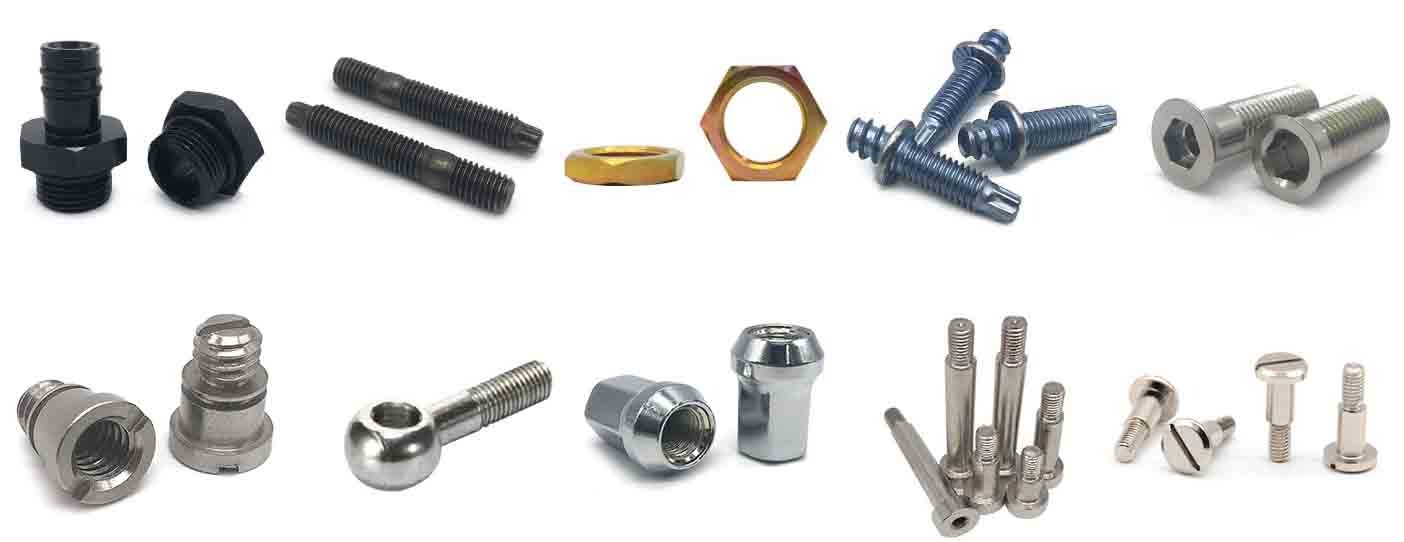Cold heading is a widely used forging method in fastener manufacturing, where metal bars are upset using a mold at room temperature. This process is commonly used for creating the heads for various types of fasteners, and it offers advantages like reduced cutting requirements and a variety of forging material options, such as copper, aluminum, carbon steel, alloy steel, stainless steel, and titanium alloy. Cold heading is typically carried out using specialized machines that allow for continuous, multi-station, and automated production.

Key Characteristics of the Cold Heading Process:
Plastic Deformation: Cold heading involves applying pressure to the metal blank at room temperature, causing plastic deformation to occur in the mold cavity, resulting in the desired shape and size.
High-Quality Materials: Selecting metal materials with excellent plasticity, adhering to strict chemical composition and mechanical property standards, is crucial for successful cold heading.
Cold Heading Machinery: Specialized machines for bolt and nut manufacturing come in various models and series, offering reliable performance, high efficiency, and stable quality.
Forging Force: The process requires significant forging force, making the power equipment used in the process relatively expensive.
Surface Quality and Size Accuracy: Cold heading produces workpieces with excellent surface quality and high size accuracy, but excessive deformation should be avoided due to cold hardening.
Wide Application Scope: The cold heading process is suitable for large-scale production and a wide range of workpiece specifications.
Factors Influencing Cold Heading Accuracy:
Raw Material Chemical Composition: Pure metals generally have better plasticity than alloys, and impurities can reduce plasticity.
Metallographic Structure of Raw Materials: Different multiphase tissue characteristics impact plasticity, and defects like grains, mixtures, bubbles, and looseness can reduce metal plasticity.
Process Deformation Temperature: Plasticity increases with temperature, but this relationship is not strictly linear.
Metal Strain Rate: Strain rate changes can both increase and decrease metal plasticity, depending on the specific conditions.
Deformation Mechanics Conditions: Compression strain is favorable for plasticity, while stretching strain is not conducive to plasticity.
Other Factors: Discontinuous deformation can improve metal plasticity, especially during hot deformation for low-plasticity metals.
Choosing a High-Performance Cold Heading Machine:
To ensure precise and efficient cold heading, selecting the right machine is essential. Consider the following factors:
Wear-Resistant Alloy Copper Tile: The connection between the crankshaft, machine body, and impact rod should use high wear-resistant alloy copper tile for durability and low maintenance costs.
Alloyed Ductile Iron Body: The machine body should be cast from alloyed ductile iron, offering high tensile strength and wear resistance.
Two-Stage Gear Transmission: A two-stage gear transmission system with high efficiency and large transmission torque is ideal.
Pneumatic Clutch Brakes: Equipping the machine with pneumatic clutch brakes helps reduce motor power consumption.
Efficient Cutting System: A cutting system driven by a guide plate with a reciprocating movement ensures stability and good dynamic balance.
Multi-Station Design: Multi-station cold heading machines with tension closed clamp systems allow for flexible and efficient production.
Variable Frequency Speed Regulation: Variable frequency speed regulation devices offer versatile control options.
Safety Features: Including fault detectors and safety protection devices to safeguard equipment and molds.

Selecting Raw Materials for Cold Heading:
To achieve precision in cold heading, raw materials should meet certain criteria:
Spheroidizing Annealing Treatment: Raw materials must undergo spheroidizing annealing treatment to attain a spherical pearlite metallurgical structure.
Reduced Material Hardness: Lower material hardness is preferred to minimize cracking tendencies and extend mold service life.
Size Accuracy: Raw material size should align with product requirements and manufacturing processes.
High Surface Quality: Raw materials must have a dark color with a lubrication film and be free of defects like scratches, folding, cracks, rust, or oxidation.
Minimal Decarburized Layer: The total thickness of the decarburized layer in the raw material radius direction should not exceed 1% of the raw material diameter.
Surface and Core Hardness: Raw materials should possess a hard surface and a soft center to ensure cutting quality during cold forming.
Cold Heading Test: A cold heading test helps assess material performance, with lower sensitivity to cold hardening indicating better performance.
In conclusion, adhering to these key points will significantly enhance the cold heading accuracy for the fastener manufacturing process. By selecting suitable materials, utilizing high-performance machinery, and understanding the factors that influence accuracy, manufacturers can achieve precise and efficient production of various fasteners.







